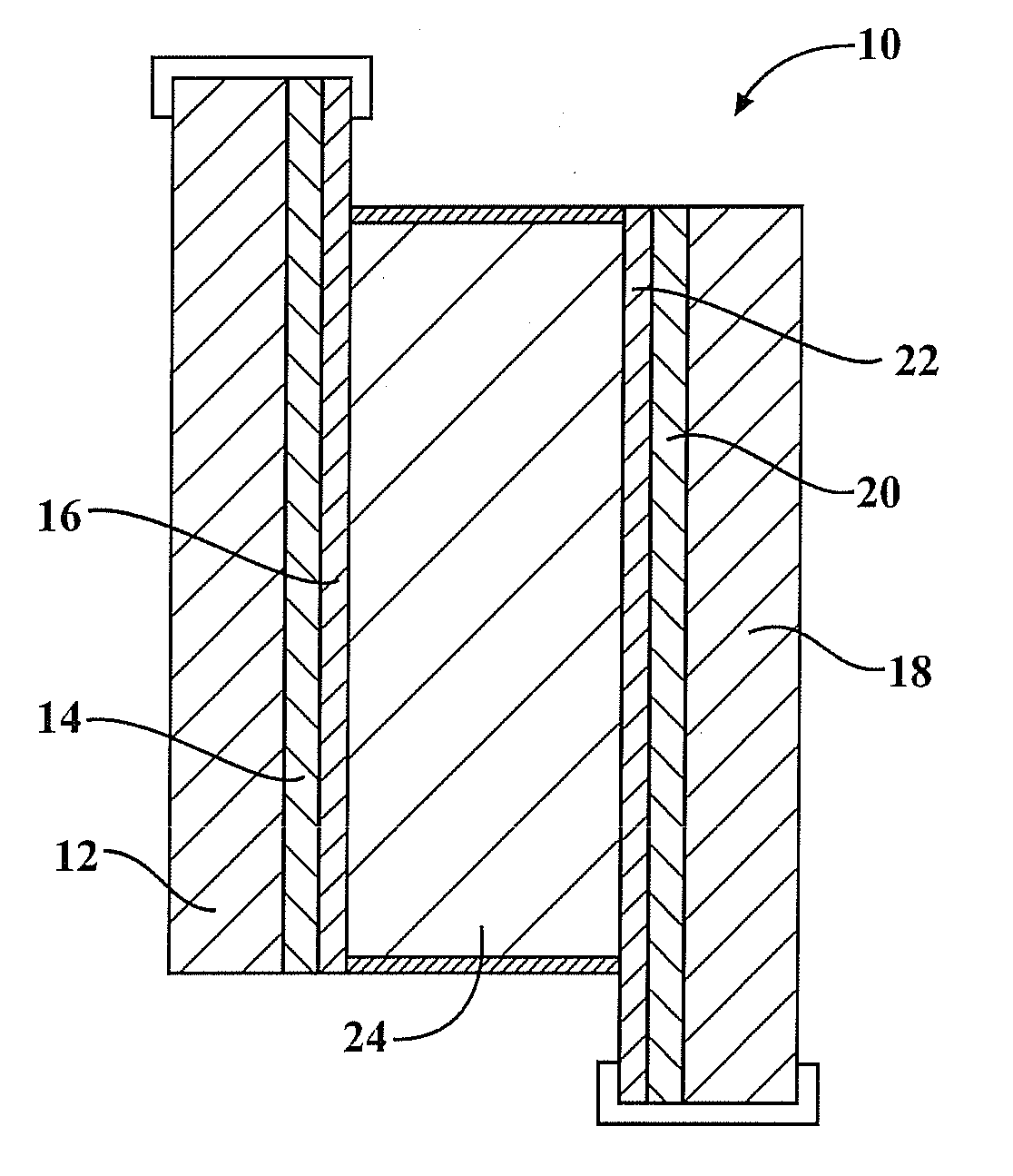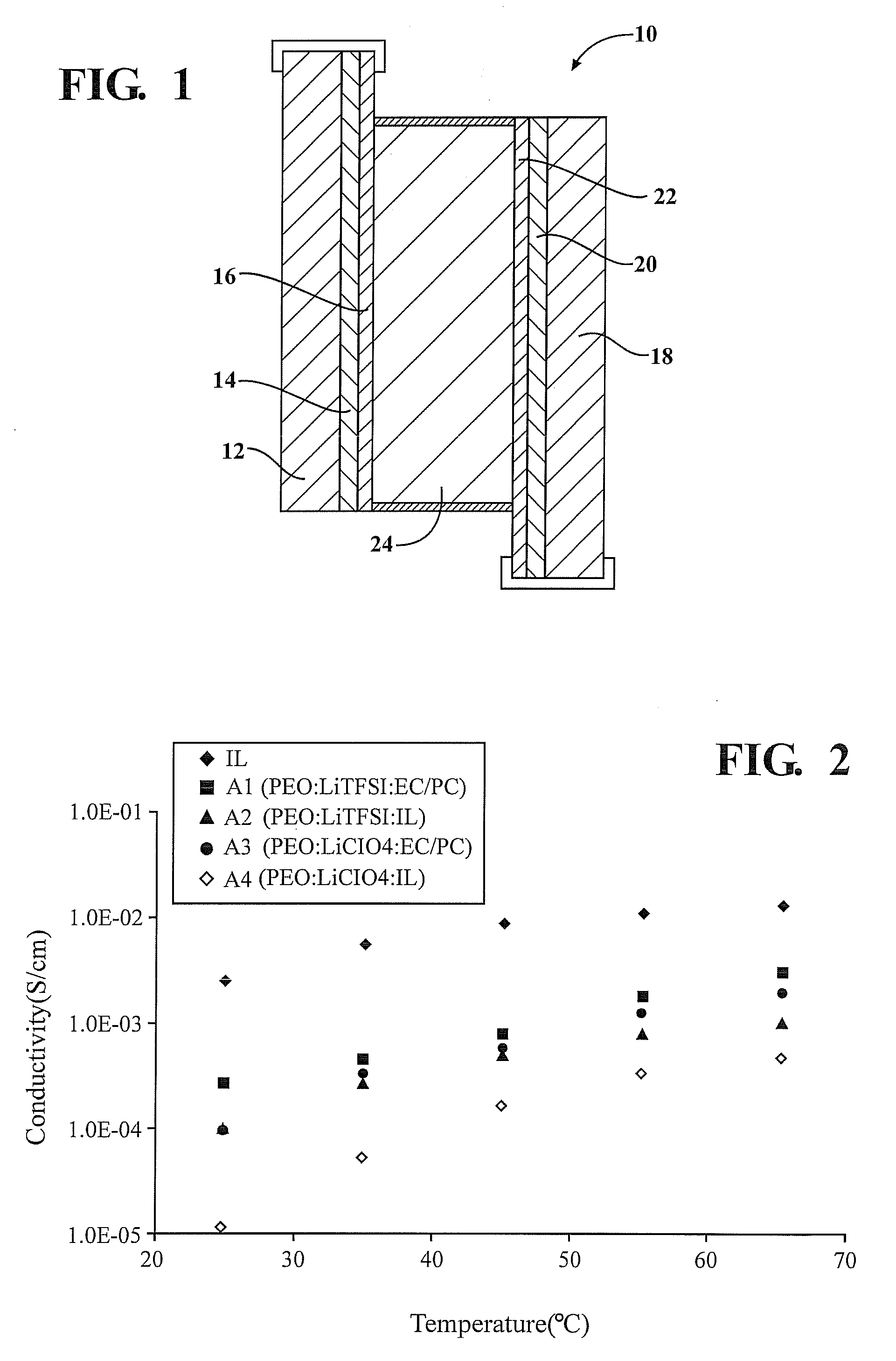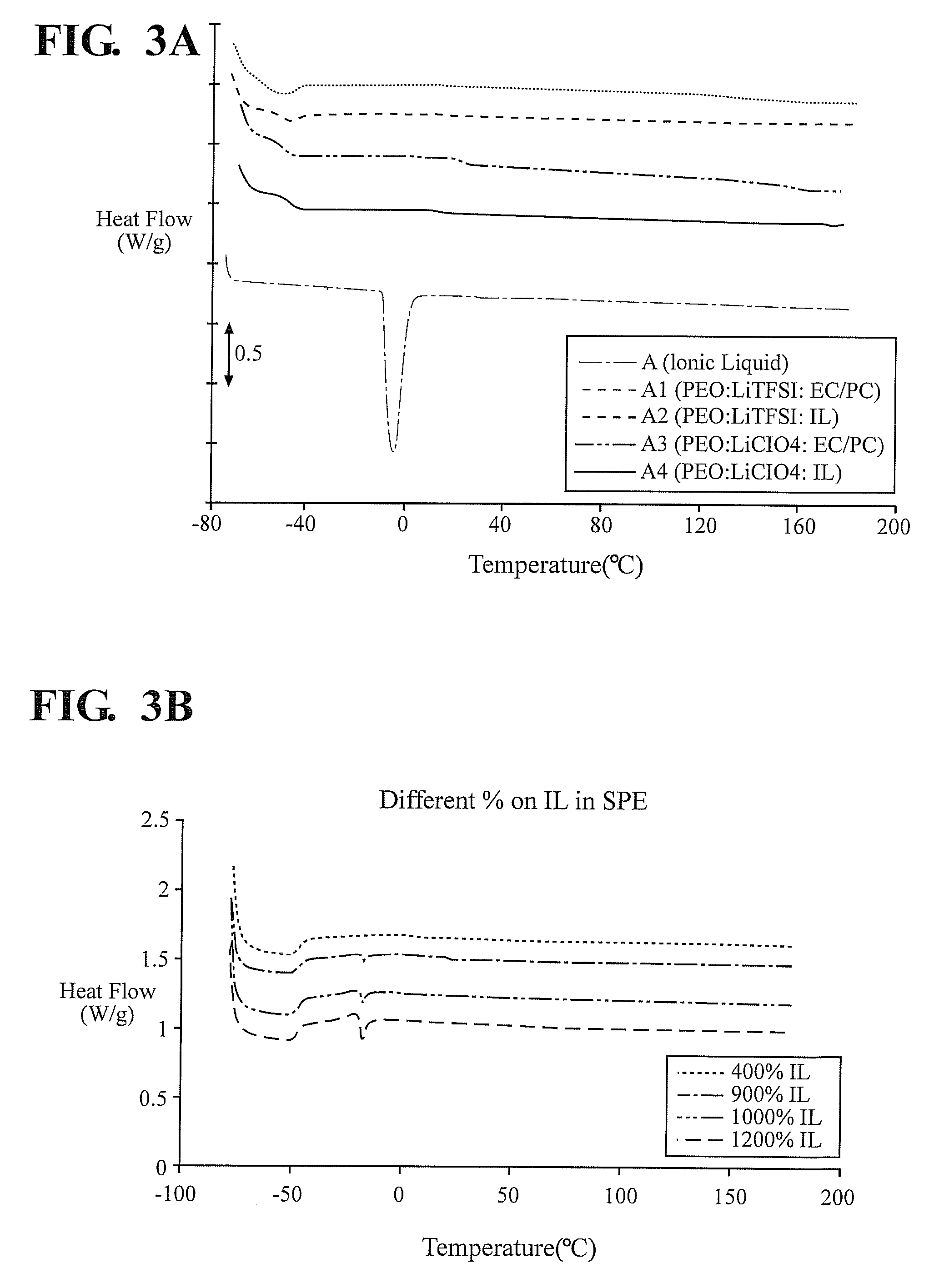Polymer electrolytes and devices containing them
a technology of polymer electrolytes and electrolyte devices, applied in the field of polymer electrolytes, can solve the problems of affecting the long-term use of electrochemical devices containing, limiting the kinds of organic and inorganic compounds that can be used in conjunction with ils, and affecting the long-term use of electrochemical devices, etc., to achieve the enhancement of the bulk of ionic conductivity, improve the conductivity, and improve the conductivity
- Summary
- Abstract
- Description
- Claims
- Application Information
AI Technical Summary
Benefits of technology
Problems solved by technology
Method used
Image
Examples
example 1
Polymer Electrolyte Preparation
[0133]The polymer electrolytes consist of polymer substrate, inorganic electrolyte salt, and organic ionic salt plasticiser.
[0134]Polymer electrolytes were prepared by mixing PEO and LiClO4 or LiTFSI in an 8:1 mole ratio. The polymer-salt mixture was then dissolved in 25% w / v acetonitrile. To this gel solution, 25% w / w 3:1 mole ratio EC / PC or P14TFSI plasticiser was added and the electrolyte stirred for 24 hrs. The acetonitrile solvent was then allowed to slowly evaporate at room temperature and then further dried by vacuum for a further 24 hrs. The composition of the various electrolytes produced is given in Table 1. The quantity of plasticiser is expressed in weight percent (wt %) of PEO and salt present.
TABLE 1Composition of samples preparedSample IDCompositionA (IL)P14TFSIA1(PEO)8LiTFSI + 25% EC / PCA2(PEO)8LiTFSI + 25% P14TFSIA3(PEO)8LiClO4 + 25% EC / PCA4(PEO)8LiClO4 + 25% P14TFSI
example 2
Polymer Synthesis
[0135]Conducting polymers poly(3,4-ethylenedioxythiophene) (PEDOT), and polypyrrole (PPy) were prepared on 5×5 cm conducting indium tin oxide (ITO) glass electrodes as follows.
[0136]For PEDOT, a 16% w / v solution of Fe(III) tosylate (Fe(OTs)3) was prepared by diluting 40% w / v Baytron CB40™ with butanol and used as an oxidizing agent. 0.5 mol of pyridine per mole of oxidant was used for base-inhibited vapour-phase polymerization. The mixture of pyridine and Fe(OTs)3 was spin coated on the previously cleaned glass substrate at a speed of 1800 rpm. The oxidant film was allowed to dry on a hot plate at 60° C. for 10 min. The glass substrate was then transferred to a reaction chamber containing the monomer 3,4-ethylenedioxythiophene (EDOT). The vapour phase polymerization of EDOT was carried out at 60° C. for 1 h after which the glass substrate was transferred to a hot plate for 20 min. The films were then thoroughly rinsed with ethanol. Typical PEDOT films produced by th...
example 3
Construction of an Electrochromic Device
[0138]Electrolyte was drop cast onto the PEDOT and PPy coated ITO electrode surfaces. Prior to device assembly the electrolyte was degassed and dried under vacuum (−90 KPa) for 5-6 hrs at 30° C. After drying the two ITO coated electrodes were pressed together using an 80 micron glass cover slip spacer to prevent electrical shorting within the device. Finally the devices were edge sealed with UV cured epoxy glue (see FIG. 1).
PUM
| Property | Measurement | Unit |
|---|---|---|
| Mass | aaaaa | aaaaa |
| Mass | aaaaa | aaaaa |
| Mass | aaaaa | aaaaa |
Abstract
Description
Claims
Application Information
 Login to View More
Login to View More - R&D
- Intellectual Property
- Life Sciences
- Materials
- Tech Scout
- Unparalleled Data Quality
- Higher Quality Content
- 60% Fewer Hallucinations
Browse by: Latest US Patents, China's latest patents, Technical Efficacy Thesaurus, Application Domain, Technology Topic, Popular Technical Reports.
© 2025 PatSnap. All rights reserved.Legal|Privacy policy|Modern Slavery Act Transparency Statement|Sitemap|About US| Contact US: help@patsnap.com



